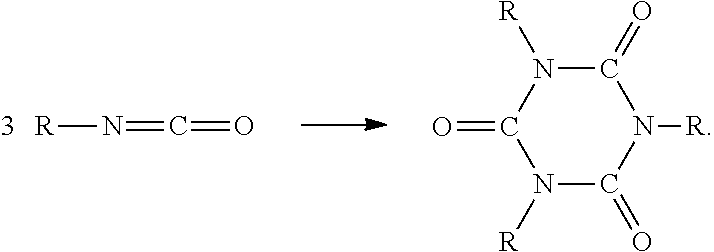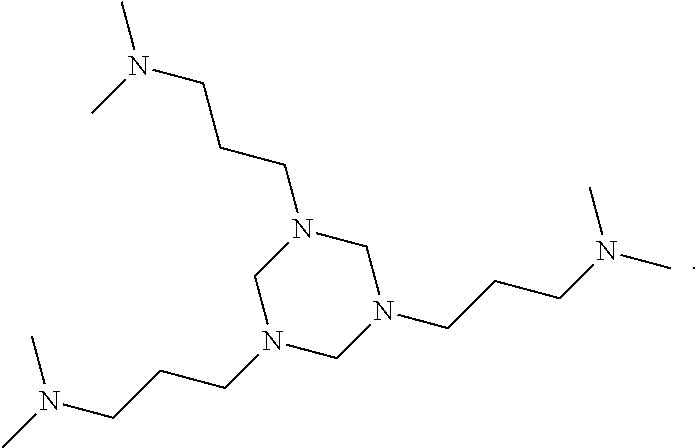Rigid foam
a rigid foam and foam technology, applied in the field of rigid foam, can solve the problems of degrading the physical properties of rigid foam, unsuitable for most applications, and internal scorching of foams, and achieve the effect of increasing flame retardan
- Summary
- Abstract
- Description
- Claims
- Application Information
AI Technical Summary
Benefits of technology
Problems solved by technology
Method used
Image
Examples
examples
[0065]A series of rigid foams (Foams 1-8) are formed according to the present invention. A series of comparative rigid foams (Comp Foams 1 and 2) are also formed but not according to this invention. The Comp Foams 1 and 2 are not formed using the carbodiimide catalyst component of this invention. The isocyanate-reactive component and the isocyanate component, along with the reaction conditions used to form the Foams 1-8 and the Comp Foams 1 and 2, and the resulting physical properties are set forth in Table 1 below.
[0066]
TABLE 1CompCompFoam 1Foam 2Foam 1Foam 2Foam 3Foam 4Foam 5Foam 6Foam 7Foam 8Isocyanate-Reactive ComponentPolyester66.6758.362.0257.757.756.2556.2556.2546.2846.28PolyolMannich Polyol—15.47—15.315.315.3715.3715.3715.3715.37Chain Extender12.53.0911.633333366Plasticizer————————55Polymerization1.671.551.551.51.51.491.491.491.491.49CatalystSilicone6.673.096.2332.982.982.9833SurfactantIsocyanurate8.335.157.75554.994.994.9955CatalystBlowing—2.06—2222222CatalystCarbodiimide——...
PUM
| Property | Measurement | Unit |
|---|---|---|
| Temperature | aaaaa | aaaaa |
| Weight | aaaaa | aaaaa |
| Time | aaaaa | aaaaa |
Abstract
Description
Claims
Application Information
 Login to View More
Login to View More - R&D
- Intellectual Property
- Life Sciences
- Materials
- Tech Scout
- Unparalleled Data Quality
- Higher Quality Content
- 60% Fewer Hallucinations
Browse by: Latest US Patents, China's latest patents, Technical Efficacy Thesaurus, Application Domain, Technology Topic, Popular Technical Reports.
© 2025 PatSnap. All rights reserved.Legal|Privacy policy|Modern Slavery Act Transparency Statement|Sitemap|About US| Contact US: help@patsnap.com



